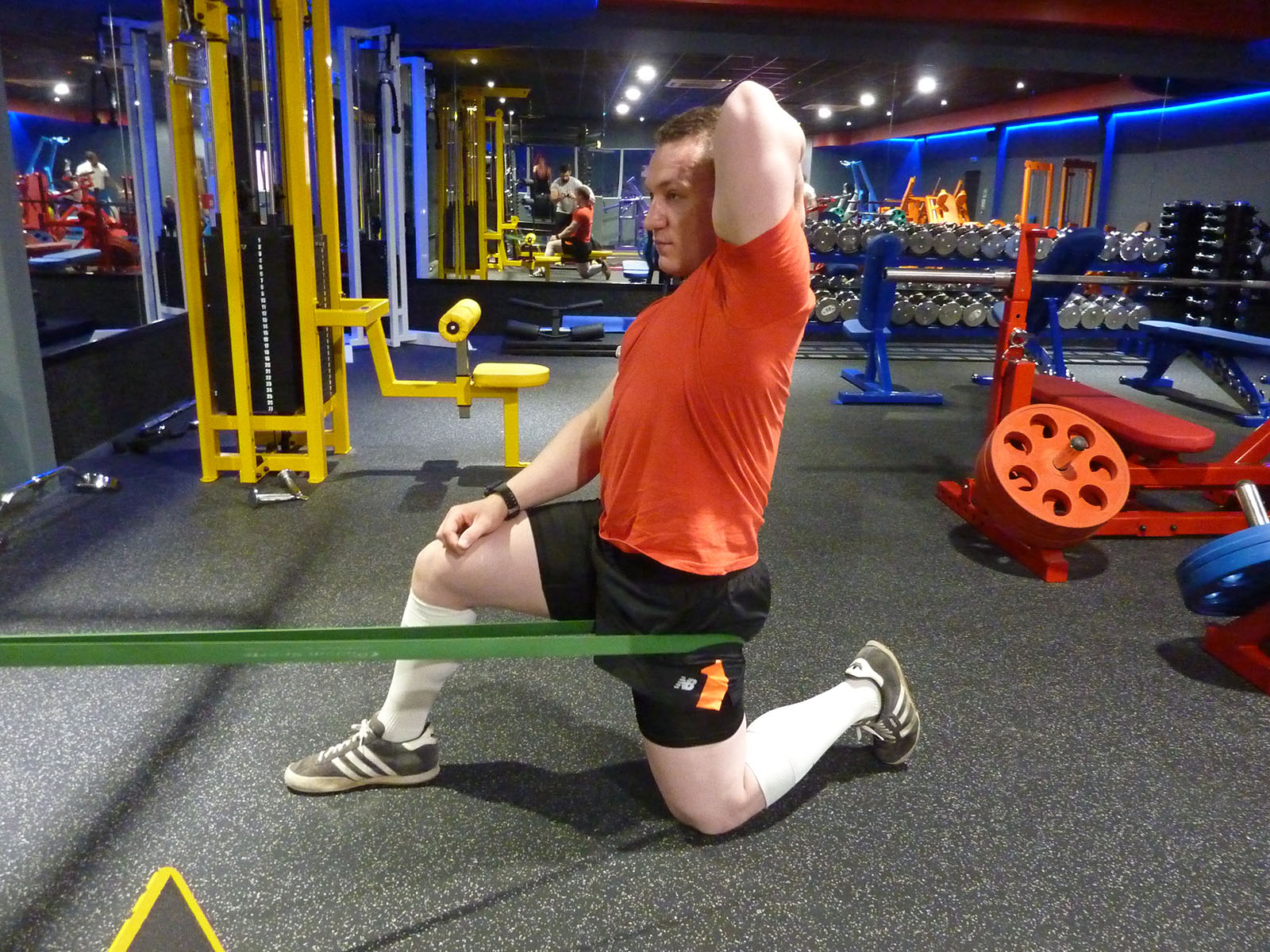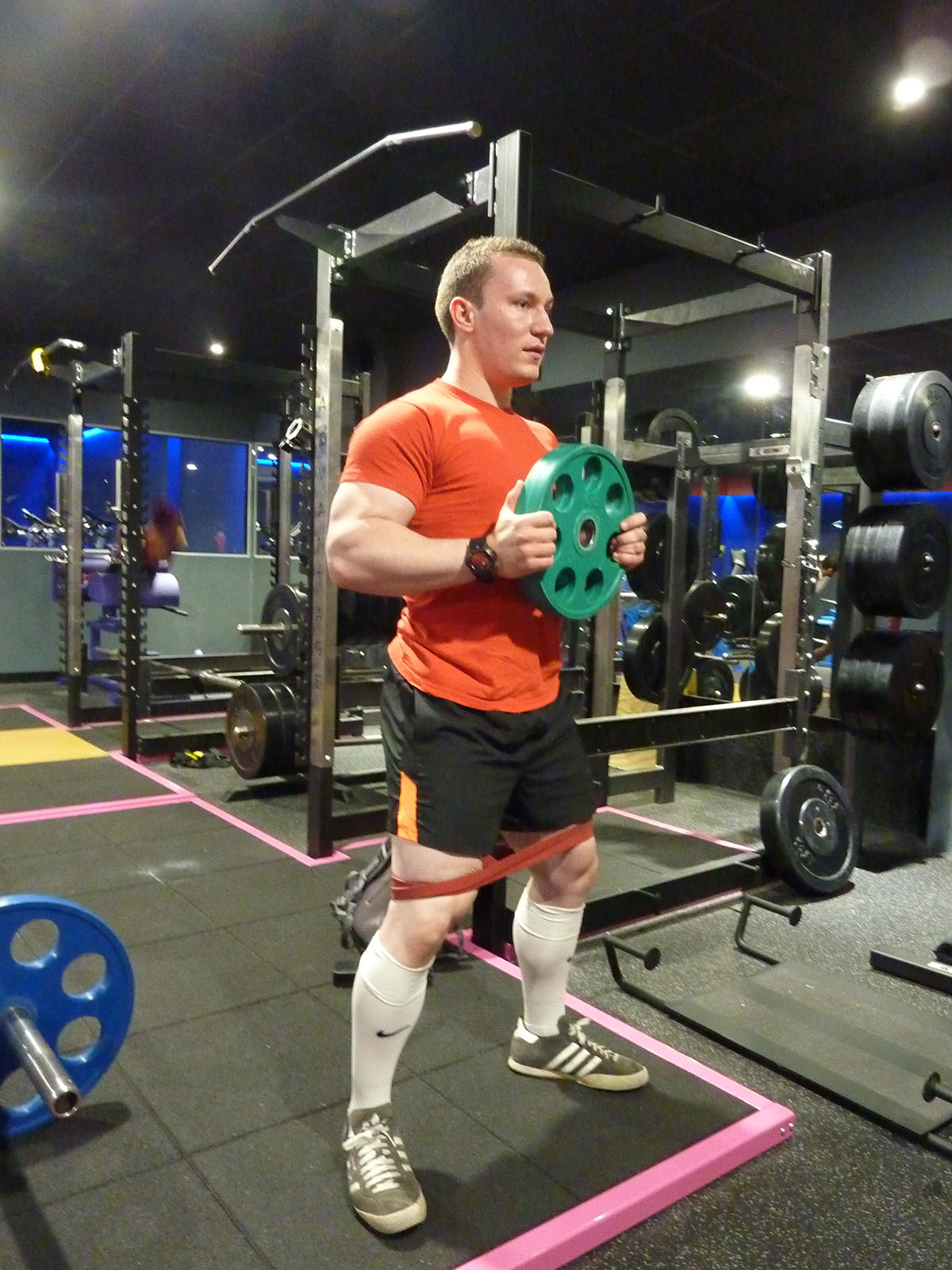How to Warm Up Better for Bigger Lifts
Fitness
We all know warming up before exercise is important. A good warm up will reduce risk of injury and improve performance. However, it is easy to get carried away doing too much mobility and activation work before loading a barbell. We want to get the maximum benefit with minimal time spent. This will involve doing three things:
- Remove movement restrictions
- Prime key muscles
- Increase body temperature
Remove Movement Restrictions
The nature of this step will depend on your particular level of function at rest. Can you, having sat for two hours, get up and sink into a full squat with your heels on the floor and your knees out? If so, you can probably skip this step.
It is a cliché by now that we as humans who sit at desks and in cars have chronically shortened hip flexors and hamstrings, as well as flexed thoracic spines and extended cervical spines. This manifests as tight, stiff hips and rounded shoulders. To squat, deadlift, press or bench press effectively, these will need to be alleviated. It is often enough to squat down with your back against something solid and spend 30 seconds or so prying your knees out and opening your hips. Ideally you would avoid actual soft-tissue work like foam rolling or tissue smashing before training.

A favourite drill of mine to supplement this is to use a band to apply an anterior hip distraction. This looks like a traditional psoas-quad stretch but, since muscles are both stronger and stiffer than we give them credit for, we use the band tension to create some extra space in the hip joint. This can help reduce the tight or impacted feeling we get in our hips. It will also help you hit depth on the squat and get into a good starting position when you deadlift. Make sure you flex your rectus abdominis (or six-pack muscle) and glutes to tilt the pelvis backwards and magnify the stretch. If you don’t do this you can lunge forwards without lengthening the hip flexors at all.
For people who also feel tight and hunched through the thoracic spine, I suggest lying on something like a foam roller and stretching backwards over it: starting at the top of your back and keeping your hips on the floor with your chin tucked in, touch the back of your head to the floor. Do this with the foam roller all the way down your spine, getting as much of your back in contact with the floor as you can at each stage. This, combined with the anterior hip distraction and some prying in the bottom of a squat, should leave you ready to adopt the proper positions.
Prime Key Muscles
The next step is to choose one or two muscle groups which are key to tying the movement together. For example, since your glutes connect the lats and thoracolumbar fascia to the hamstrings and rest of the kinetic chain, as well as posteriorly rotating your pelvis and providing strong hip extension, it makes sense for us to prime them for work before squatting or deadlifting. You can accomplish this using pre-activation exercises: these are drills derived from physiotherapy, in which you use an external resistance to help you develop more tension in a muscle. Our purpose is to cue them to contract more in the pattern we want to perform: for this reason my favourite glute activator is the banded goblet squat.
To perform this, take either a short band or double over a standard-length red band. Loop it around your legs, just above your knees. Grab some kind of weight between 10 and 20 kilos and hold it close to your chest. Adopt your squat stance, and twist your feet into the floor as if to turn your toes outwards. Your feet shouldn’t move, and you should feel friction build up. Your glutes will also activate more strongly. Now, squat down, driving your knees out against the band. On the way back up, push your hips through as if finishing a deadlift.


Similarly, during the press and bench press, the muscles which retract and rotate the scapula are critical both for keeping the shoulder socket moving correctly and for transmitting power into the bar. A good way to switch these on is to take a band, hold it in front of you at arm’s length, and pull it as if to make it longer. You can adjust the resistance by using a thicker band or by gripping with your hands closer together.
Increase Body Temperature
This last step is the simplest, and we can do it nearly by accident. Once you’ve removed your restrictions and activated latent key muscles, the next task is to begin grooving the movement with the bar. Stick with the bar only for a couple of sets, then add some weight (e.g. 60 kg) to begin ramping up activation of your prime movers. If you don’t pause much between these few sets, you’ll probably be sweating long before your work weight.
Let’s look at a sample of a series of warm-ups I would take. For example, let’s assume I want to bench press 125 kg for 5×2. This is not a max attempt, so I will be less sparing with volume on the warm-up. I’d start with the bar for two sets of 8-10, then 60 kg for 5, 80 kg for 5, 100 kg for 4, 110 kg for 3, 120 kg for 2. If this were a lighter weight, e.g. a 4×8 load, I might do 4-5 reps through each warm-up weight. The goal is to do only enough sets to prepare your technique for executing the weight you aim to lift. If you use sets of 5 throughout when warming up for a one-rep max, you will be too fatigued to hit full performance. An example warm up series for a maximum squat attempt could be: bar for 2×8, 60 kg for 5, 100 kg for 3, 140 kg for 2, 180 kg for 1, 195 kg for 1, 205 kg attempt. If you are not happy with each rep at each new weight, re-attempt the weight until you are.
The flip side to this advice is that adding more reps during the warm-up, especially on high-volume or hypertrophy-focused sessions, is an easy way to accumulate more tonnage and make your training more productive.
A final thought is to consider where you put your mobility work, e.g. mobilizing, stretching, tissue smashing. Everyone needs some maintenance, and many of us need drastic work on our movement ranges. However, the time to do this is either after training or on your off days. Think of the goal of this mobility work as being to reduce the amount of time you need to spend warming up. Your aim should ultimately be to arrive at the gym, go over to the bar and start lifting it.